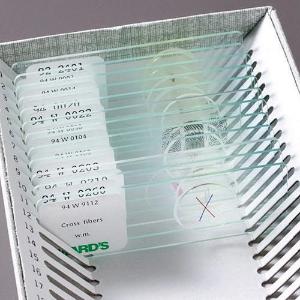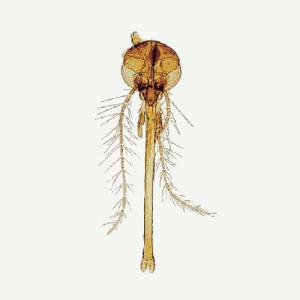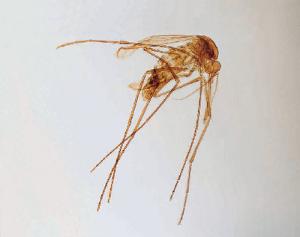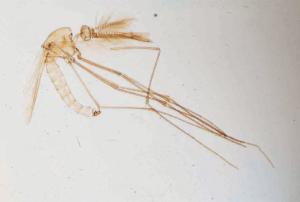Summer Bites: Mosquito facts you're itching to know
Everyone's had a summer evening ruined by mosquitoes.
But there is a lot of mystery and misunderstanding about this backyard biology specimen. Did you know mosquitoes are part of the same family as houseflies and fruit flies? Why do mosquitoes feed on blood? Why do mosquito bites itch? What is the anatomy of a mosquito? How do they spread disease?
Observing the habitats, behaviors, and life cycle of these pesky creatures can be a wonderful, hands-on learning experience for students! The future entomologists or medical researchers in your classroom will itch to know more about the "skeeters" living amongst us.
Buzz around this article to suck up some answers to inspire your biology and ecology lesson plans.
Mosquito anatomy
Mosquitoes are a two-winged fly belonging to the family Culicidae in the insect order Diptera. There are over 3,500 species of this flying insect buzzing about our planet.
Like all flies, mosquitoes go through four stages in their life cycles: egg, larva, pupa, and adult, or imago. The first three stages—egg, larva, and pupa—are primarily aquatic.
Useful tip alert: Whenever there is standing water for four to seven days, mosquitoes can multiply. You can reduce mosquito breeding near your home by getting rid of even small amounts of stagnant water.
Adult mosquitoes have three basic body parts:
- Head - This is where all the sensors are, along with the biting apparatus called the proboscis (only female mosquitoes have the proboscis, the better to eat you with my dear!). The head has two compound eyes, antennae to sense chemicals, and a mouthpart called the palpus.
- Thorax - This segment is where the two wings and six legs attach. It contains the flight muscles, compound heart, some nerve cell ganglia, and tracheoles.
- Abdomen - This segment contains the excretory and digestive organs.
So, they've got a sensor package, a motor package, and a fuel processing package -- the perfect design for a blood-drilling machine! It locates the blood vessel and draws blood up through its mouth. As it does this, it injects saliva that contains an anticoagulant. This stops the blood from clotting. If the blood were to clot around the mosquito's mouth, it might get stuck.
Why do mosquitoes want to suck your blood?
You're out in your backyard, enjoying your family and friends around a campfire. You innocently breathe in oxygen and exhale the carbon dioxide that attracts mosquitoes to a potential blood meal. Just as the s' mores are ready to eat —OUCH —you start to feel the pokes of the mosquito's sharp mouth. How annoying!
But, for the mosquito, her hunt is a matter of life and death. She must find food—blood—to nourish the hundreds of tiny eggs inside her body. That's why it's the female mosquitoes, not the males, that use our blood as formula for their nursery. Blood is a good source of proteins and amino acids they use to grow their eggs. Egg development requires a high amount of protein that can't be found in plant sources. So, they go for blood protein instead.
Little known fact, mosquitoes don't actually bite or suck our blood. Blood is pushed, by blood pressure, up into the mosquito's proboscis after the insect successfully sticks it into a vein.
Why do mosquito bites itch?
Many people get bitten by mosquitoes, but bites can affect people differently. When mosquitoes bite, they draw out blood while injecting some of their saliva (gross, huh?). Their saliva contains a variety of substances that assist their blood-feeding behavior, such as an anticoagulant (like anopheline), vasodilators, and proteins. So that we don't feel what they're up to, these sneaky little buggers also have an antiseptic in their saliva.
The body doesn't recognize these proteins as its own, so the immune system goes into action. To fight them, the body's immune system releases histamine, a compound that helps white blood cells get to the affected area. Histamine acts on the itch receptors in your skin, increasing blood flow and white blood cells to the affected area, causing the itchiness, inflammation, and swelling.
You may get lucky the first time a mosquito bites you because the immune system hasn't formulated a response to the foreign invader. A lucky few may build up a tolerance. The rest of us have to scratch and pass around the calamine lotion.
How do mosquitoes spread disease?
Mosquitoes aren't just a nuisance; these creepy bloodsuckers transmit pathogens and parasites such as viruses, bacteria, protozoans, and nematodes, which cause serious diseases that include malaria, yellow fever and dengue, West Nile virus, encephalitis or filariasis. Check any "world's deadliest animals" list, and mosquitoes will be at the top.
Mosquitoes spread disease through their "bite." Mosquitoes are vectors (living things that carry diseases between animals and humans). Vectors often carry infections through blood. Many of the creatures classified as vectors are bloodsuckers. Other vectors include ticks, fleas, and sandflies.
As explained above, when a mosquito "bites," it not only sucks blood but secretes saliva as it's probing for a blood vessel. This saliva is contaminated with all sorts of bioactive substances that enter your blood. The mosquito becomes infected when it feeds off a person or animal with the disease. It then passes the infection on when it exchanges fluids through its bites.
Mosquitoes are greedy too. They often feed in a method called sip feeding. This means that the mosquito does not just suck all the blood it needs from one source–it takes multiple meals from multiple sources. Studies have revealed that mosquitoes can drink three times their body weight in blood. Now that's a lot! Unfortunately, this exposes more people to infection.
Scientists study these pesky flies hoping to learn how to keep us safe from mosquito-borne diseases. The Invasive Mosquito Project is a public education tool that helps high school teachers meet national education requirements, and students learn about mosquitoes, public health, and safety. The project is excellent for in-classroom or distance learners.
We've only scratched the surface here, but your students will be itching to learn more about mosquitoes. By studying the fossil records of these loathsome creatures, scientists have found species of mosquitoes that are 79-100 million years old. There's a lot there to learn, and with your lesson plans and activities, your students will be fascinated and stay engaged.
Recommended products
[StartProductBlock]

Vectors of Diseases Affecting Man and Domestic Animals Slide Set
Demonstration of important arthropod vectors. All slides are prepared as wholemounts.
[EndProductBlock]
[StartProductBlock]

Piercing Type, Mosquito, whole-mount slides
Observe the mouthpart of a mosquito. Demonstrates piercing type mouthparts of female mosquito. Unstained.
[EndProductBlock]
[StartProductBlock]
Mosquito, Life Cycle Slide
Ectoparasite life cycle. The composite includes an egg, larva, pupa, as well as male and female positioned on one slide. Unstained.
[EndProductBlock]
[StartProductBlock]

Culex pipiens, Adult Slide
Can be a vector of disease. House mosquito. Unstained.
[EndProductBlock]
[StartProductBlock]

Anopheles-Male Slide
Vector of Malaria.
[EndProductBlock]
